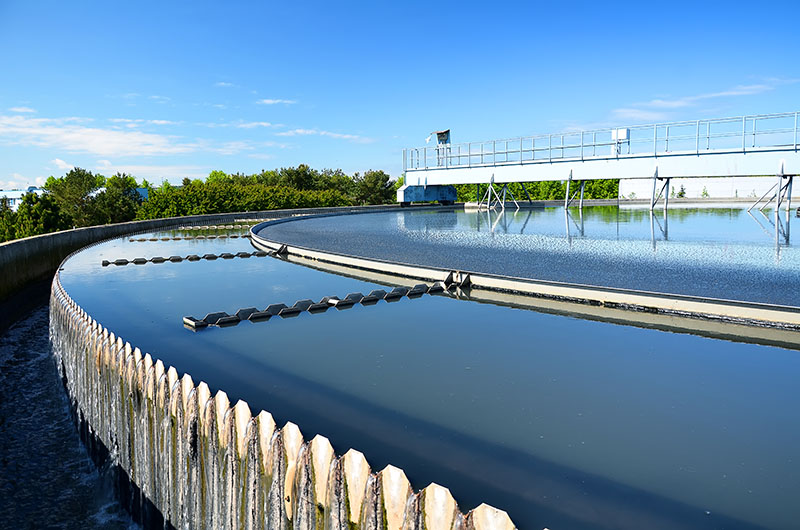The Link Between Wastewater Management and Public Safety
The Link Between Wastewater Management and Public Safety
Blog Article
Recognizing Wastewater Therapy Processes and Their Ecological Impact
The intricacies of wastewater treatment processes play an essential role in mitigating environmental challenges connected with water air pollution. Each stage, from preliminary to sophisticated therapies, is developed to address certain pollutants, inevitably guarding both public health and water ecological communities.
Overview of Wastewater Therapy
How is wastewater changed right into a risk-free resource for the environment? Wastewater treatment is a crucial procedure created to get rid of pollutants from used water, thereby safeguarding public health and wellness and protecting ecological communities. This process begins with the collection of wastewater from residential, industrial, and commercial sources, which is after that routed to therapy facilities.
At these facilities, numerous physical, chemical, and organic approaches are utilized to treat the wastewater. Consequently, organic treatments, such as triggered sludge processes, utilize bacteria to damage down natural matter.
The treated effluent can be safely discharged right into all-natural water bodies or recycled for irrigation and industrial purposes, promoting resource conservation. In addition, the treatment process creates biosolids, which can be repurposed as fertilizers or dirt changes, additionally enhancing sustainability.
Phases of Therapy Procedures
The wastewater therapy procedure commonly is composed of three primary phases: preliminary, key, and secondary therapy. Each stage serves a distinct role in reducing the toxin load and making certain the effluent fulfills environmental standards prior to discharge.

The primary therapy stage concentrates on the physical separation of put on hold solids from the wastewater. Through sedimentation, heavier fragments clear up at the end of sedimentation tanks, developing sludge, while lighter materials, such as oils and oils, float to the surface and are skimmed off. This procedure considerably reduces the natural and inorganic load in the wastewater.
Second therapy is an organic procedure intended at more decreasing the concentration of natural matter. This phase is vital for accomplishing the essential biochemical oxygen need (BODY) decrease, eventually leading to cleaner effluent prepared for discharge or additional therapy.

Advanced Therapy Technologies
Complying with the secondary treatment processes, advanced therapy modern technologies play an essential duty in more enhancing the high quality of dealt with wastewater. These modern technologies are developed to remove residual pollutants that are not successfully removed during main and secondary therapies, guaranteeing the effluent satisfies stringent governing standards.
Amongst the widely utilized advanced treatment methods are membrane layer filtration, reverse osmosis, and progressed oxidation processes. Membrane layer purification, including microfiltration and ultrafiltration, works in dividing fine fragments, microorganisms, and colloids from the water (Wastewater). Reverse osmosis uses semi-permeable membranes to get rid of liquified solids, causing high-grade water suitable for numerous applications
Advanced oxidation processes (AOPs) employ strong oxidants to break down organic contaminants, including pharmaceuticals and individual care items that are resistant to conventional treatment. These techniques try here enhance the biodegradability of intricate compounds, facilitating their elimination.
An additional significant technology is the usage of biological nutrient elimination procedures, which specifically target nitrogen and phosphorus, protecting against eutrophication in getting water bodies. In general, sophisticated treatment innovations are vital for accomplishing greater degrees of purification, advertising water reuse, and securing public health and wellness while addressing the obstacles related to wastewater administration.
Ecological Benefits of Therapy
Countless environmental advantages arise from efficient wastewater therapy procedures that contribute to ecosystem health and wellness and sustainability. Mostly, these anchor procedures substantially lower the launch of damaging pollutants into all-natural water bodies, which helps keep marine ecological communities. By getting rid of pollutants such as heavy steels, nutrients, and pathogens, dealt with wastewater mitigates the threat of waterborne diseases and promotes biodiversity in aquatic environments.
Additionally, wastewater therapy facilities usually employ sophisticated innovations that enable water recycling and reuse. This practice not only saves fresh water sources however likewise minimizes the need on natural water supplies. Improved nutrient elimination from wastewater can also avoid eutrophication, a process that causes algal blossoms and succeeding oxygen depletion in marine systems.
In addition, reliable treatment procedures can reduce greenhouse gas discharges, particularly methane and nitrous oxide, which are frequently released during unattended wastewater decomposition. By recording and making use of biogas from anaerobic digesters, centers can transform waste right into renewable resource, thus adding to a decrease in fossil gas dependence.
Obstacles and Future Patterns
While the environmental benefits of wastewater therapy are clear, numerous obstacles linger that impede optimal end results in this area. One major concern is maturing infrastructure, which typically causes inefficiencies and raised functional costs - Wastewater. Several therapy plants were made decades earlier, and their abilities do not straighten you can try here with modern-day needs, which consist of more stringent regulatory requirements and higher volumes of wastewater as a result of urbanization

Looking in advance, there is an expanding focus on resource recovery and circular economic climate principles within wastewater therapy. Advancements such as anaerobic digestion, which can create biogas, and progressed purification modern technologies are gaining grip. These methods not just improve therapy efficiency however also advertise sustainability.
Eventually, resolving these obstacles needs partnership amongst stakeholders, investment in modern technology, and a dedication to continuous research. By accepting these fads, the wastewater therapy sector can develop to satisfy the needs of an altering setting and society.
Verdict
In final thought, wastewater treatment processes play a crucial duty in enhancing ecological top quality and public wellness. The multi-stage therapy framework, coupled with sophisticated technologies, effectively reduces air pollution and advertises sustainable water administration.
Report this page